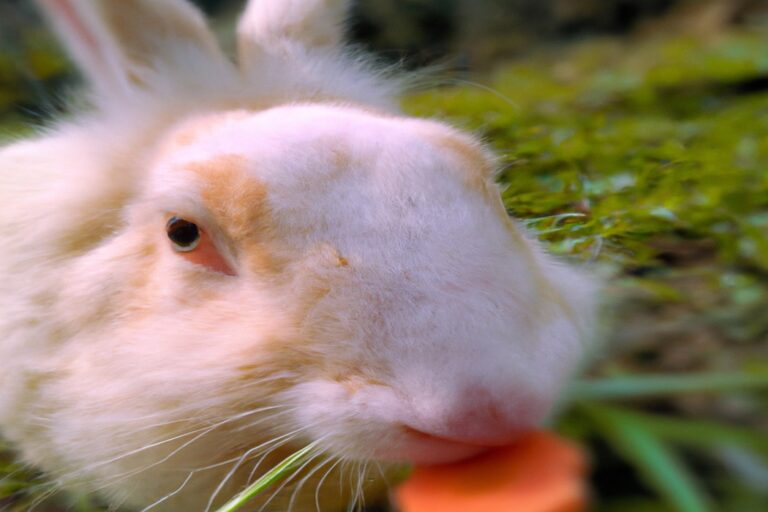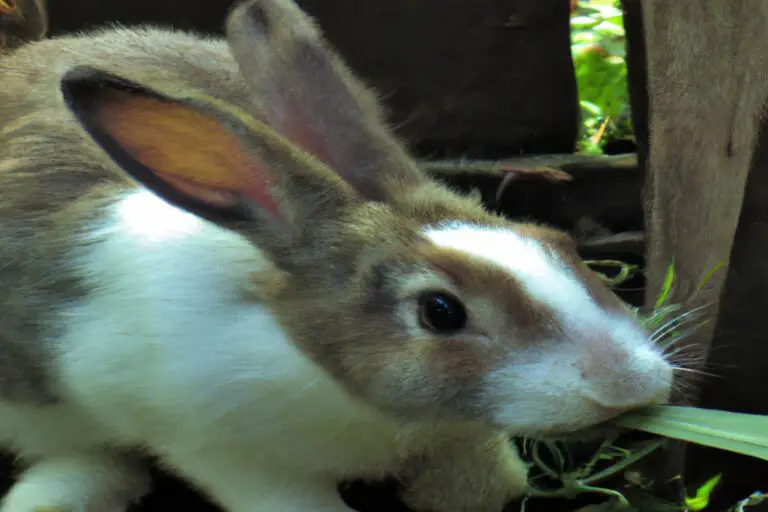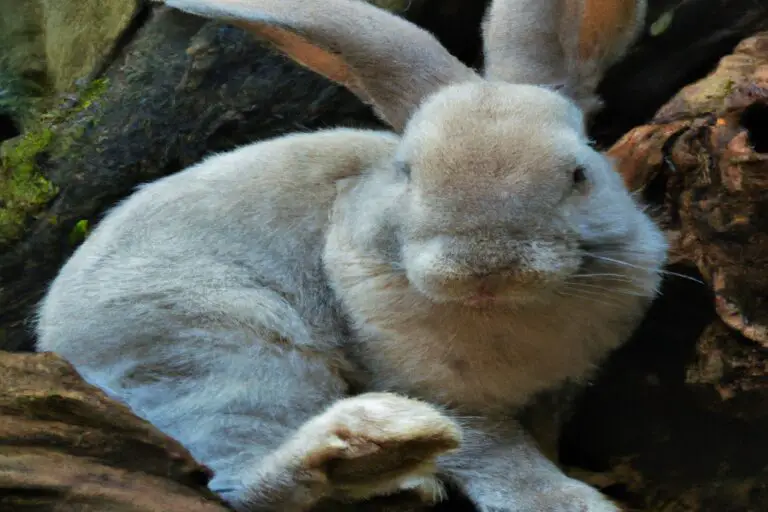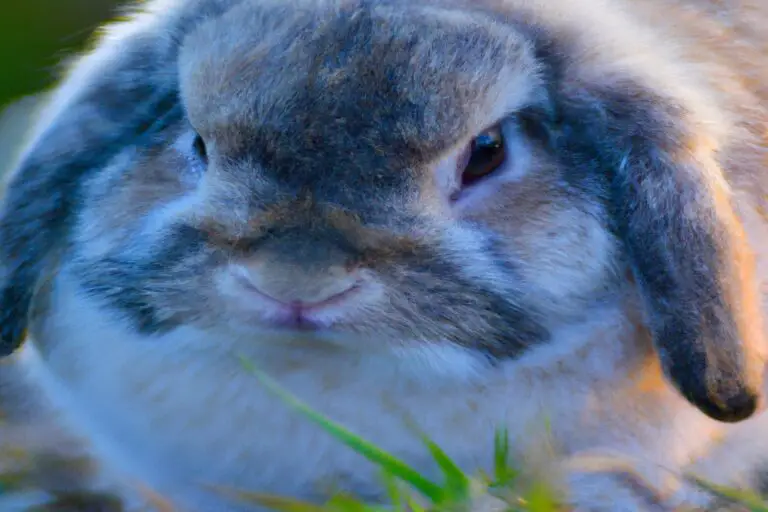Why Is The Rabbit Unafraid of Predators? Unravel the Mystery
Key Takeaways:
- Rabbits have a strong instinct for self-preservation, which makes them highly alert to potential dangers in their environment.
- The rabbit’s ability to blend into its surroundings and quickly navigate its surroundings helps it avoid or escape from potential threats.
- Rabbits rely on their excellent sense of hearing and keen eyesight to detect and evade predators.
- Certain species of rabbits possess natural defenses, such as strong hind legs and sharp claws, which provide them with means of protection.
Are you curious about the fearless nature of rabbits? Have you ever wondered why these fluffy creatures seem unfazed by potential dangers lurking around them?
Well, let me enlighten you on the fascinating reasons behind the rabbit’s unwavering confidence.
From their exceptional speed and agility to their remarkable ability to camouflage and conceal, rabbits have evolved a set of impressive adaptations that allow them to face threats head-on. Join me on this journey as we delve into the world of rabbits and unravel the secrets behind their fearlessness.
Get ready to discover the hidden traits that make rabbits masters of survival.
| Reasons | Explanations |
|---|---|
| 1. Camouflage | The rabbit’s fur color and patterns help it blend into its surroundings, making it less visible to potential predators. |
| 2. Speed and agility | Rabbits are known for their quick speed and ability to maneuver through tight spaces, allowing them to escape from predators easily. |
| 3. Burrowing abilities | Rabbits have a natural instinct to dig underground burrows, which serves as both shelter and escape routes from predators. |
| 4. Alertness | Rabbits have excellent hearing and vision, allowing them to detect potential threats from a distance and react accordingly. |
| 5. Social behavior | Rabbits often live in groups, known as warrens, where they can rely on the collective vigilance and warning signals of their fellow rabbits. |
Understanding the Rabbit’s Nature
The rabbit’s nature is key to understanding their behavior and why they may not be easily frightened.
The Rabbit’s Natural Predators
The rabbit has several natural predators that it needs to watch out for.
These include:
- Birds of prey, such as hawks and owls, which can swoop down and snatch a rabbit from the ground.
- Foxes and coyotes are skilled hunters that can chase down and capture a rabbit.
- Snakes can also be a threat to rabbits, especially smaller species that can squeeze into their burrows.
- Domesticated pets, such as dogs and cats, may also pose a danger if they are not properly supervised.
Rabbits have developed various adaptations and instincts to avoid being caught by these predators, such as their ability to run quickly and their keen senses.
But they still need to be cautious and aware of their surroundings to stay safe.
The Rabbit’s Evolutionary Adaptations
The rabbit has evolved several adaptations that help it survive and thrive in its environment. Its long ears provide excellent hearing, allowing it to detect predators from a distance.
Its large, powerful hind legs enable it to run quickly and evade danger.
The rabbit’s ability to reproduce rapidly is also an evolutionary advantage, ensuring the survival of the species. Additionally, its keen sense of smell helps it find food and avoid potential threats.
These adaptations have allowed the rabbit to be unafraid and successfully navigate its surroundings.
Rabbit’s Superior Speed and Agility
The rabbit possesses exceptional speed and agility, allowing it to swiftly escape from potential threats.
The Rabbit’s Ability to Escape Danger
Rabbits have an impressive ability to escape danger due to their natural instincts and physical attributes.
Their acute hearing allows them to detect even the slightest sound of approaching predators.
Their strong hind legs enable quick and agile movements, allowing them to swiftly change directions and evade capture.
Additionally, rabbits have the advantage of speed, being able to reach high velocities in a short amount of time when necessary.
These combined factors contribute to the rabbit’s ability to outmaneuver and escape from potential threats.
Rabbit’s Exceptional Jumping Skills
Rabbits possess exceptional jumping skills that set them apart from other animals.
Their powerful hind legs and lightweight bodies allow them to leap significant distances and heights.
Rabbits use their jumping ability for various purposes, such as escaping predators, reaching food sources, and navigating their surroundings efficiently.
Their exceptional jumping skills enable them to quickly and easily clear obstacles and move swiftly through their environment.
This ability is crucial for their survival and helps them stay safe in the wild.
Whether it’s a few feet or several feet, rabbits can effortlessly jump and navigate their way.
Camouflage and Concealment
To survive in the wild, camouflage and concealment are key for rabbits to stay hidden and safe from predators.
Rabbit’s Coat Color and Patterns
The color and patterns of a rabbit’s coat can vary greatly.
They come in a range of colors including white, gray, brown, black, and even multi-colored.
Some rabbits have solid coats, while others have patterns like spots or stripes.
These coat colors and patterns serve a purpose in the wild – they help rabbits blend in with their environment and escape from predators.
For example, a white rabbit in a snowy area would be better concealed than a brown rabbit.
This camouflage is essential for their survival.
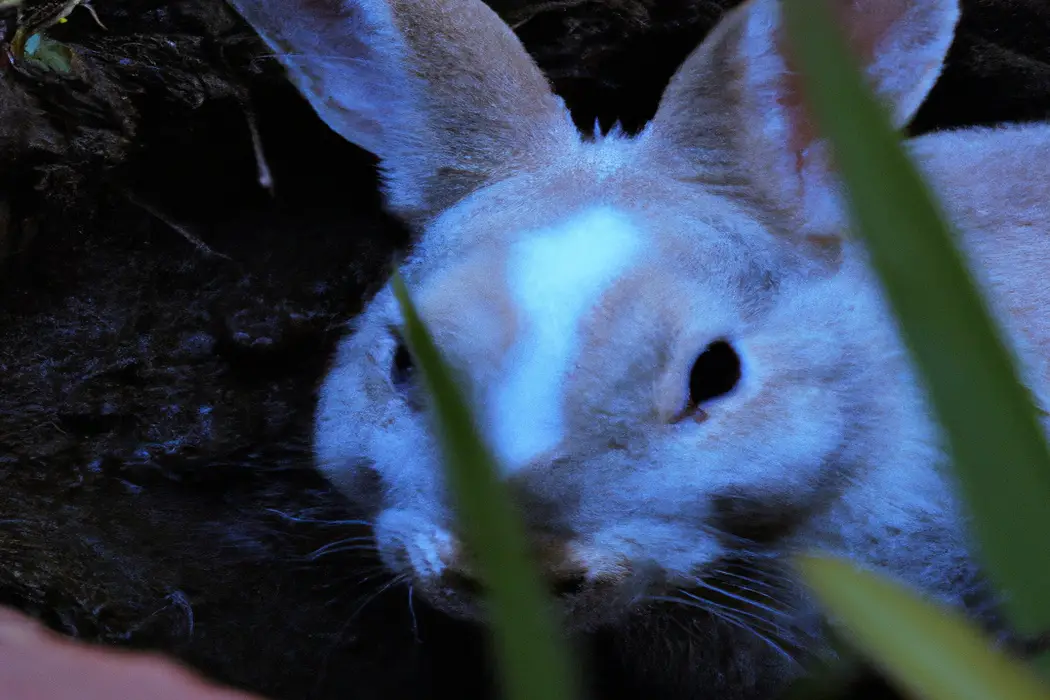
The Importance of Staying Hidden
Staying hidden is important because it allows you to avoid danger and stay safe. When you stay hidden, you become less visible to potential threats or predators, giving you a better chance of survival.
Being hidden can also help you carry out tasks or missions without being detected, whether you’re a soldier or a spy.
By staying hidden, you can maintain a strategic advantage and maintain control over the situation. Ultimately, staying hidden is crucial for protection and achieving your goals.

Social Nature and Group Dynamics
Rabbits have a strong social nature and their group dynamics play a significant role in their behavior and survival.
Safety in Numbers for Rabbits
Rabbits find safety in numbers because there’s strength in unity.
By staying together in a group, they can look out for each other and have a better chance of detecting predators.
If one rabbit spots danger, it can alert the others, allowing everyone to flee to safety.
This group dynamic helps minimize individual vulnerability and increases the chances of survival.
Rabbits have instinctively understood the benefits of safety in numbers for generations, and it continues to be a crucial aspect of their natural behavior.
The Role of Communication in Rabbit Society
Communication plays a vital role in the social fabric of rabbit society.
Through various vocalizations, body language, and scent cues, rabbits are able to convey important information to one another.
They use communication to establish social hierarchies, warn each other of danger, and express feelings such as fear or contentment.
This helps maintain a sense of unity and cooperation within their groups.
Effective communication is essential for the survival and well-being of rabbits in their complex social world.
Nesting and Burrowing Habits
Rabbits nest in shallow burrows for protection and to raise their young.
Creating Safe Shelters for Protection
Creating safe shelters is essential for rabbits to protect themselves from predators and inclement weather.
They naturally find comfort in burrows, so providing artificial burrows or hiding spots made of sturdy and safe materials is crucial.
Placing the shelters in quiet and secluded areas will minimize disturbances and make rabbits feel safer.
Consider adding insulation or bedding for additional comfort and warmth.
Regularly check and maintain the shelters to ensure they remain secure and in good condition.
Keep in mind that creating safe shelters is key to helping rabbits thrive in their environment.
Escaping Underground as a Defensive Strategy
Rabbits have a unique defensive strategy – escaping underground. When they sense danger, they quickly retreat into their burrows for safety.
Their ability to dig and navigate underground tunnels allows them to evade predators and stay protected.
By utilizing this instinctive behavior, rabbits increase their chances of survival in the wild. Although this defensive strategy may seem simple, it is incredibly effective for ensuring the rabbit’s safety.
Common Rabbit Behaviors
Rabbits exhibit various common behaviors.
Freezing as a Reaction to Danger
In dangerous situations, rabbits have a unique way of responding called freezing.
This means they stop moving and stay completely still, almost like they’re invisible.
By freezing, rabbits try to blend into their surroundings and avoid drawing attention from predators.
It’s a natural defense mechanism that helps increase their chances of survival.
So, if you ever see a rabbit freeze in front of you, it’s their way of staying safe and hoping the danger passes by.
Thumping as a Warning Signal
Thumping is a warning signal commonly used by rabbits.
When a rabbit thumps its hind legs against the ground, it is alerting others of possible danger.
This behavior is most often seen in wild rabbits, but can also be observed in pet rabbits.
Thumping sends vibrations through the ground, serving as a warning to other rabbits to be cautious and stay hidden.
It is a natural defense mechanism that helps rabbits communicate and protect themselves from predators.
So, if you see a rabbit thumping, it’s best to be on the lookout for potential threats in the area.
Frequently Asked Questions
Do rabbits really never get scared?
Rabbits can definitely get scared.
While they may appear calm and unbothered at times, they are still prey animals with a natural instinct to be on the lookout for danger.
Loud noises, sudden movements, or unfamiliar environments can all trigger fear in rabbits.
They may freeze, try to hide, or even flee when they feel threatened.
Providing a safe and secure environment for your rabbit can help them feel more at ease and reduce their stress levels.
Giving them plenty of hiding spots and avoiding sudden disturbances can also help them feel more secure in their surroundings.
What should I do if I encounter a frightened rabbit?
If you encounter a frightened rabbit, it’s important to approach with caution.
Move slowly and quietly, avoiding sudden movements or loud noises that could startle them further.
Give the rabbit space and try to create a calm environment.
Offer them food or treats, but be patient if they don’t immediately take it.
If necessary, contact a local wildlife rescue or animal control for assistance.
Remember, gaining the rabbit’s trust takes time, so be gentle and understanding in your approach.
How can I create a safe environment for pet rabbits at home?
To create a safe environment for your pet rabbits at home, there are a few key things you can do. Firstly, make sure their living space is free from hazards like electrical wires and toxic plants.
Provide them with a spacious cage or an enclosed area where they can move around freely.
Secondly, ensure they have plenty of fresh water and a balanced diet of hay, vegetables, and pellets. Lastly, give them opportunities for exercise and mental stimulation through toys and regular playtime.
Final Verdict
While rabbits may appear timid and docile, they possess a range of evolutionary adaptations that help them navigate their environment and avoid danger. From their remarkable speed and agility to their ability to blend into their surroundings, rabbits have developed strategies to stay safe.
Additionally, their social nature and communication skills further enhance their ability to protect themselves.
Understanding and appreciating these natural behaviors can help us create a safe and nurturing environment for pet rabbits at home. So, let’s embrace their unique qualities and provide them with the care and protection they need to thrive.


